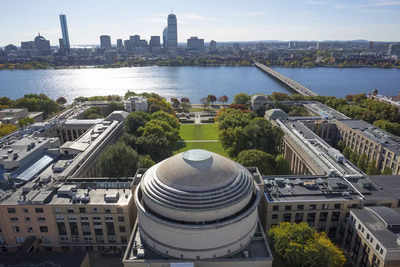
MIT Announces Financial Aid: The Massachusetts Institute of Technology (MIT) has unveiled a groundbreaking expansion of its financial aid program, ensuring that undergraduate education becomes more accessible for American families. Starting in the 2025 academic year, students from families earning less than $200,000 annually will benefit from tuition-free education, a significant step towards reducing barriers to higher education.
Tuition-Free Education for the Majority
MIT’s expanded financial aid program means that approximately 80% of American households fall within the new $200,000 income threshold. Families earning below $100,000 annually will see an even greater benefit, as they will not be required to pay anything towards the total cost of attendance. This includes tuition, housing, dining, fees, and allowances for books and personal expenses.
Stu Schmill, MIT’s Dean of Admissions and Student Financial Services, emphasised the institution’s commitment to accessibility, saying, “We believe MIT should be the preeminent destination for the most talented students in the country interested in an education centred on science and technology, and accessible to the best students regardless of their financial circumstances.”
The changes mark a substantial increase from previous thresholds, where full financial coverage was capped at $75,000 and tuition-free eligibility at $140,000.
The True Cost of Attending MIT
For families not receiving financial aid, the annual cost of attendance at MIT for the 2024–2025 academic year is approximately $85,960. This includes $61,990 for tuition, $13,060 for housing, $7,220 for dining, $910 for books and supplies, $2,374 for personal expenses, and a $406 student life fee.
In contrast, the median annual cost for an MIT undergraduate receiving financial aid in 2024 was just $12,938, enabling 87% of students in the Class of 2024 to graduate debt-free. Those who borrowed reported a median debt of $14,844, significantly lower than the national average.
A Lifeline Amid the Student Debt Crisis
MIT’s expanded aid program comes at a time when US student debt has surpassed $1.7 trillion, according to the Pew Research Center. This debt, second only to mortgage debt, continues to grow rapidly. MIT’s announcement seeks to alleviate this burden, allowing graduates to enter their careers without the financial constraints of heavy debt.
The benefits of an MIT education extend beyond financial relief. Graduates of the Class of 2024 reported an average starting salary of $126,438, showcasing the long-term value of an MIT degree.
What Families Can Expect in 2025
Starting in 2025, MIT will offer financial aid based on family income. Families earning less than $100,000 annually will pay no costs for attendance, which includes tuition, housing, dining, fees, books, and personal expenses.
For families with incomes between $100,000 and $200,000, the costs will scale according to their financial situation, with a maximum contribution of $23,970 to cover non-tuition expenses. Families earning above $200,000 may still receive need-based financial aid depending on their unique circumstances.
This structure aims to ensure that a broader range of families can access an MIT education regardless of their financial background. MIT has also emphasised the availability of online tools to help families estimate their costs.
MIT’s move sets a new standard for financial aid in higher education, addressing the pressing challenges of affordability and accessibility. By easing the financial burden on families, the institution aims to attract the brightest minds across the socioeconomic spectrum, reinforcing its reputation as a global leader in science and technology education.
Maintaining Accessibility and Excellence
MIT’s efforts to expand financial aid align with its commitment to admitting students based solely on merit, with no preferential treatment for children of alumni or donors. This policy ensures that aid is directed towards those most in need and that the brightest minds have access to the institute’s world-class education.
However, gaining admission to MIT remains highly competitive. With an acceptance rate of just 5% for the 2023–2024 academic year, the institution remains one of the most selective globally, alongside Harvard (3.4%) and Stanford (3.9%).
How is the funding managed?
The financial aid expansion is largely made possible by MIT’s endowment, built through decades of alumni donations. MIT President Sally Kornbluth reflected on this generosity, “Today’s announcement is a powerful expression of how much our graduates value their MIT experience. Our endowment is an intergenerational gift from past students to the students of today and tomorrow.”
This summer, MIT’s Committee on Undergraduate Admissions and Financial Aid, led by faculty, reviewed the institute’s policies to ensure that they remain accessible. The new financial aid thresholds are the first of their recommendations to be implemented, with more expected in the future.

